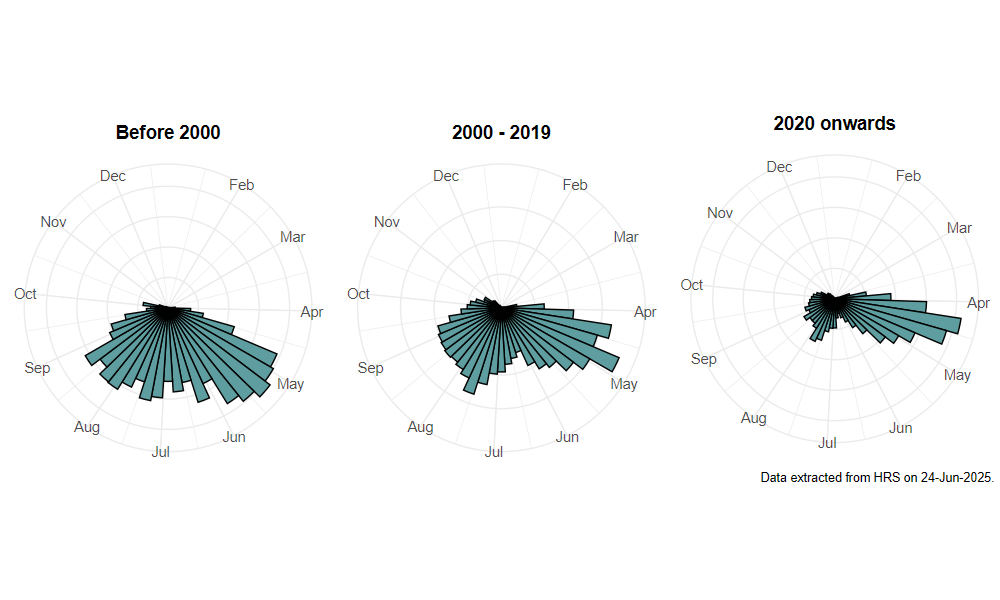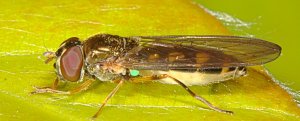Melanostoma scalare (Fabricius, 1794)
Identification
Identification difficulty = 2. ![]()
![]() according to Ball & Morris, 20241
according to Ball & Morris, 20241
Synonymy
Like M. mellinum, this is a rather variable species which is rumoured to have been split into two species by revisionary work in Europe. Recent DNA testing did not support such a split.
Biology
The larva as for M. mellinum. Again it appears to be double brooded, but the earlier peak in abundance in May-June tends to be stronger, so that it tends to be the more abundant of the two in the spring and early summer.
Flight period
The following plots show the number of unique records per week excluding those reported to be of immature stages.

Distribution
Widespread throughout Great Britain, like M. mellinum, but it tends to prefer lusher vegetation and is not usually found in open situations such as moorland. It is more likely to be found in woodland rides and edges or around scrub or hedgerows.

Trends
The following plots show the Frescalo TFactor vs year and a map of the rescaled frequency (all records) for the species.
-
Ball, S., & Morris, R. (2024). Hoverflies of Britain and Ireland. WILDGuides (3rd ed.). Oxford: Princeton University Press. ↩
